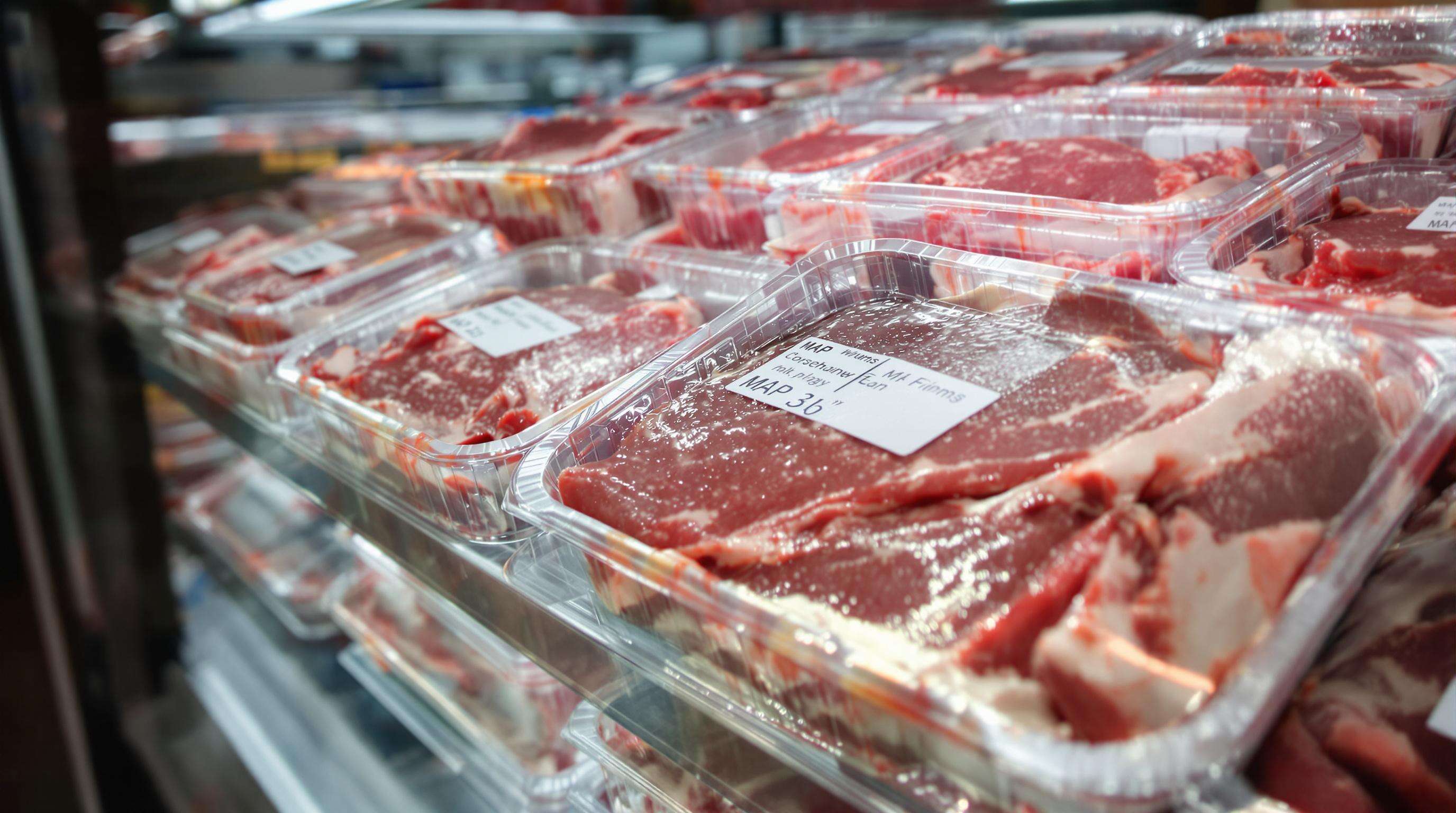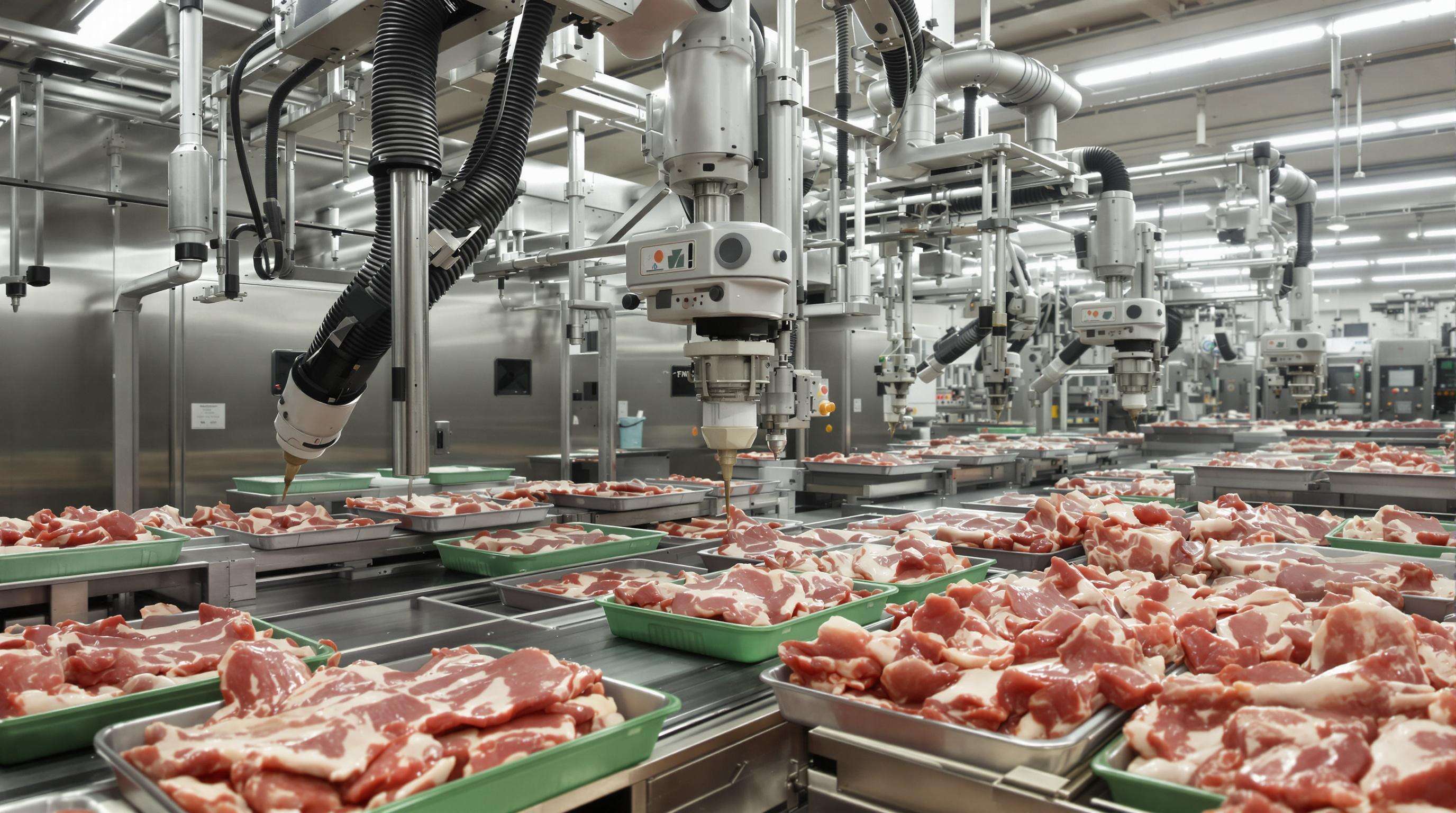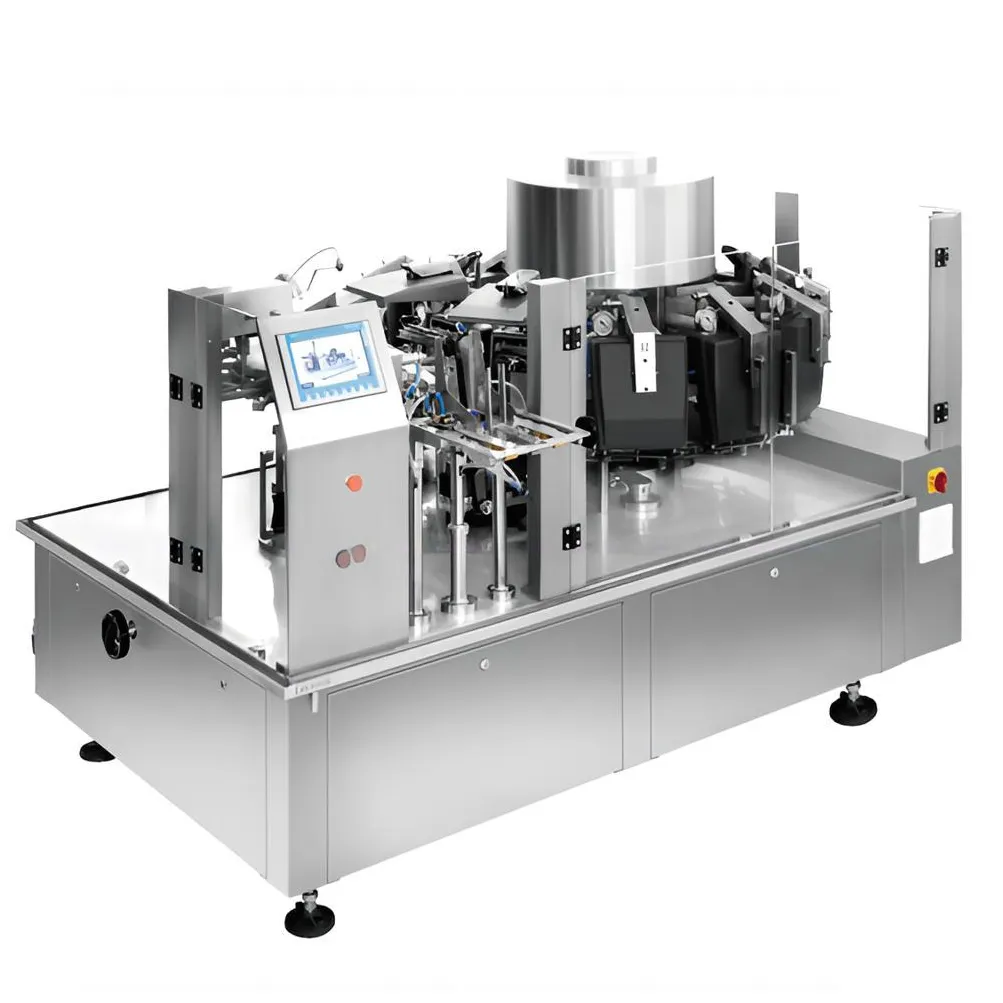Hoe Veranderde Atmosfeer Verpakking (MAP) Verleng Houdbaarheid in Vleisprodukte

Die wetenskap agter veranderde atmosfeerverpakking (MAP) vir vleisverpakkingstoestel
Veranderde Atmosfeer Verpakking, of MAP vir kort, werk deur die gewone lug binne verpakking te vervang met versigtig gemengde gasse wat gewoonlik tussen 30 en 70 persent koolstofdioksied, ongeveer 30 tot 60 persent stikstof en minder as 2 persent suurstof bevat. Dit skep 'n omgewing waar voedsel baie langer vars bly omdat dit die chemiese reaksies wat verarming veroorsaak, vertraag. Navorsing wat in Food Chemistry in 2023 gepubliseer is, het getoon dat hierdie verpakking die oksidatiewe reaksies in vleisprodukte met byna twee derdes verminder in vergelyking met tradisionele verpakkingsmetodes. 'n Onlangse verslag van die Voedselbewaring-industrie in 2024 beweer dat MAP eintlik die raklewe kan verdubbel of selfs vervierdubbel aangesien dit beide bakteriegroei en vetafbreek tegelyk hanteer. Dit is egter regtig belangrik om suurstofvlakke onder half 'n persent te kry wanneer dit gesee word, wat beteken vervaardigers benodig spesiale masjiene om te verseker dat hul verpakking behoorlik bly werk oor tyd.
Rol van gasmengsels in die onderdrukking van mikrobiele groei en oksidasie
Koolstofdioksied werk teen mikrobes wanneer dit in die vleesweefsel geabsorbeer word en koolsuur vorm. Hierdie proses laat die oppervlak-pH met ongeveer 1,2 punte daal en versteur die selmembraan van verderfelike bakterieë soos Pseudomonas-spesies. Die effek is ook redelik aansienlik vir sekere patogene - studies toon dat Listeria monocytogenes 74 persent stadiger groei by ongeveer 10 grade Celsius wanneer dit aan CO2 blootgestel word. Vleesverwerkers hou die suurstofgehalte onder 2% om te verhoed dat die rooi kleur vervlug en om die groei van bakterieë wat suurstof benodig, te onderdruk. Industriële toetse het gevind dat 'n mengsel van 70% koolstofdioksied met 30% stikstof die beste resultate lewer, en die tyd wat verbygaan voordat beesvlees begin sleg ruik, met ongeveer 11 tot 14 dae langer is as met konvensionele verpakkingmetodes.
Barrièr-eienskappe teen vog en suurstof in MAP-films
MAP werk die beste wanneer jy die spesiale multi-laag filme gebruik wat ontwerp is om alles ongewens te blok. Die buitenste laag het gewoonlik 15 tot 23 mikron poliëster wat verhoed dat dinge deurboor. Dan is daar 'n dun laag aluminiumoksied van minder as 100 nanometer dik wat die toegang van suurstof sterk verminder, en bring die deurlaatkoerse onder 3 kubieke sentimeter per vierkante meter per dag. Tussen hierdie lae is 'n poliamiedmateriaal wat voorkom dat vog ontsnap met ongeveer 8 gram per vierkante meter per dag. Hierdie laagstrukture hou gasse stabiel binne ongeveer 5% variasie oor amper 'n maand, wat 'n groot verskil maak vir produkte wat oor lande versend word. En vergeet ook nie die ligblokeringseienskappe nie. Film wat 99,5% van die lig blok, keer die lelike oksidasie-reaksies, sodat kleure vars bly en produkte vars lyk op die winkelrakke.
Gevallestudie: MAP-skyfies verleng beesvleis se houdbaarheid met 50% in Europese kleinhandelkettings
'n Enkele groot supermarkketting regoor Europa het begin gebruik maak van hierdie spesiale MAP-skyfies gevul met 'n mengsel van 60% koolstofdioksied en 40% stikstofgas. Hierdie verandering het bewerk dat beesvleis baie langer op die rakke van die winkel kon bly, met 'n verlenging van net 14 dae tot 21 dae wanneer dit by ongeveer 4 grade Celsius gestoor is. Toe hulle oorgeskakel het vanaf gewone vakuumverpakking, was daar eintlik 38% minder vog wat uit die verpakking gedrup het. En nog beter, kliënte wat produkte teruggebring het omdat dit sleg gelyk het, het aansienlik afgenaan – met ongeveer 72%, volgens navorsing wat in Meat Science Quarterly in 2023 gepubliseer is. Die maatskappy het ongeveer $740 000 vooraf aan al die nuwe toerusting uitgegee, maar hulle het hul geld binne 'n jaar terugverdien omdat daar minder vleis vermors is en hulle vleis verder kon versend sonder dat dit sou bederf. Winkaleiers wat saam met hulle gewerk het, het nog iets anders opgemerk: verkope van daardie hoë gehalte vars vleisafdelings het met amper 'n kwart toegeneem nadat hulle oorgeskakel het na hierdie verbeterde verpakkingsisteem.
Vakuum Veltpakkery: Oortreffende Beskerming en Visuele Aantreklikheid vir Vars Vleis
Verstaan Vakuum Veltpakkery vir Verlengde Houdbaarheidsduur
Vakuumvel-pakkery, of VVP vir kort, skep 'n baie stywe folie reg oor vars vleisprodukte. Dit werk deur amper al die suurstof uit te suig tot minder as 0,1%, wat eintlik die bakterieë ontneem en die oksidasieprosesse stop. Wat dit anders maak, is hoe die dun plastiek werklik om die vleis waaroor dit gesprei word, vou. Dit help om die irritante vorming van vloeistof te voorkom wat binne gewone verpakking ontstaan, iets wat veral die verslegting van hoender- en beesvleis aanspoedig. Standaard vakuumverpakking doen nie dieselfde nie. Met VVP bly die vleis ook sappiger lyk, nie almal opgetrek soos wat tradisionele metodes dit soms laat lyk nie. Onlangse navorsing wat in 2024 gepubliseer is, het getoon dat beesvleis wat in hierdie spesiale verpakking bewaar word, tot twee weke lank kleur behou wanneer dit koud gestoor word. Dit is belangrik, want volgens Ponemon se getalle van verlede jaar verloor die vleisbedryf jaarliks ongeveer 740 miljoen dollar net omdat vleis bruin word voordat kliënte dit ooit kan koop.
Vergelyking met Tradisionele Vakuumversegeling: Aanhegting, Beskerming en Voorkoms
Vakuumvelverpakking klop gewone vakuumversegelingsmetodes omdat dit beheerde hitte gebruik om daardie mooi gladde, volledig lugdigte verseëlsings sonder enige kreukels te skep. Die resultaat? Lekkoerse daal tot ongeveer 0,01 persent, wat ongeveer 78 persent beter is as wat ons gewoonlik met tradisionele metodes sien. Boonop kan hierdie verpakking drie keer meer druk hanteer tydens vervoer. Nog 'n voordeel kom van die plat verseëlde oppervlak, wat ook beteken dat etikette baie beter kleef – ongeveer 'n en half keer so goed as voorheen. Vleisverwerkingsaanlegte let ook op. Volgens industrieverslae het ongeveer 'n derde van hulle vorig jaar oorgeskuif na VSP vir hul premium vleisgrade, veral omdat hulle daardie duidelike voorkoms wil hê, gekombineer met sterk beskerming teen kontaminasie.
Gevallestudie: Gefrugte Verwerkers wat Verswakking Verminder met 35% deur Vakuumveltegnologie
'n Midde-Oosterse pluimveeverskaffer het outomatiese VSP-stelsels geïmplementeer oor drie produksylie, met beduidende verbeteringe:
| Metrieke | Voor VSP | Na 6 Maande | Verbetering |
|---|---|---|---|
| Koue ketting-afkeuringe | 12,4% | 8,1% | 35% |
| Kliënteterugkomste | 5,7% | 3,8% | 33% |
| Gemiddelde raklewe | 9 dae | 14 Dae | 55% |
Die $2,1 miljoen belegging is binne 14 maande herwin deur verminderde afval en breër verspreidingsvermoë.
Higiëniese Ontwerp en Gehoorsaamheid aan Voedselveiligheid in Vleisverpakkingsmasjiene
Ontwerpspesifikasies wat higiëne en steriliteit verseker in gevorderde vleisverpakkingmasjiene
Vandag se vleisverpakkingstoerusting word hoofsaaklik van roesvrye staal gebou, met afgeronde hoeke en gladde elektropolitoberflaktes wat in wese daardie klein skuilplekke vir bakterieë uitwis. Die meeste moderne masjiene word gelever met Skoonmaak-ter-plasssisteem wat outomaties warm water van sowat 85 grade Celsius deur die toerusting laat loop. Hierdie chemiese wasseksies verwyder amper alle oppervlakke-ongesondhede sonder dat enigiets uitmekaar gehaal moet word, wat tyd en arbeidskoste bespaar. Sommige fasiliteite het nog 'n bietjie verder gegaan deur vervoerbande te installeer wat met antimikrobiese silwerione behandel is. Hierdie tegnologie werk redelik goed teen kontaminasie tussen verskillende produksielopies, wat die hele operasie skoner en veiliger maak vir almal wat betrokke is by die voedselverwerkingsketting.
Gehoorsaamheid aan HACCP, GMP en globale voedselveiligheidsstandaarde
Hierdie masjiene ondersteun die nalewing van die HACCP-standaard (Hazard Analysis Critical Control Point) deur middel van temperatuurmonitering in real-time en 'n dubbel-laser seëlinspeksiesisteem wat outomaties defekt verpakkingke weier. Alle voedselkontakmateriale voldoen aan die vereistes van FDA 21 CFR Part 117 en EU Regulation 1935/2004, met volledige naspoorbaarheid volgens ISO 22000-standaarde—wat die geskiktheid vir globale markte verseker.
Balansering van outomatisering met menslike toesig in higiënebeheer
Terwyl outomatisering 92% van die operasies in moderne fasiliteite hanteer, voer menslike tegnici noodsaaklike validasie uit deur middel van ATP-bioluminensieskandeerders om die skoonheid van oppervlakke te verifieer. Onlangse implementerings van higiëne-outomatiseringstegnologie het menslike foute in USDA-oudits met 47% verminder (Meritech 2024), wat aantoon hoe intelligente stelsels kritieke voedselveiligheid toesig eerder verbeter as vervang.
Outomatisering en slim tegnologieë in moderne vleisverpakkingsisteme

Integrasie van Robotika in Vul-, Seël- en Etikettering om Kontaminasie Risiko's te Verminder
In vleispakkery-fasiliteite vandag, oorname robotarms met ingeboude kameras werk soos die vul van houers, die verseël van pakkette en die aanbring van etikette. Hierdie masjiene verminder die direkte menslike kontak met produkte en studies toon dat dit besmettingsrisiko's met ongeveer 60% kan verminder in vergelyking met tradisionele manuele metodes, volgens die jongste 2024 Outomatiseringstendense Verslag. Samewerkende robotte, wat dikwels cobots genoem word, werk werklik saam met werknemers op die vloer om met daardie moeilike, onreëlmatige vleisdele te werk. Hulle bereik iets naby hare-dun akkuraatheid, wat beteken beter verseëling in die algemeen en 'n kleiner kans dat bakterieë binne kan kom. Die rotasie grypers wat hierdie robotte het, kan om alle soorte verskillende vorms vou, en spesiale mondstukke wat deur kunsmatige intelligensie gelei word, verander hul verseël druk afhanklik van hoe dik die verpakkingsfilm is. Hierdie slim aanpassing help om sterker, betroubaarder pakkette te skep wat vervoer en berging kan weerstaan sonder dat die gehalte benadeel word.
Gevallestudie: Volledig Geoutomatiseerde Lynsnyding Verminder Afsluitingstyd met 40% by 'n VSA Vleisverwerker
By 'n beesvleisverwerkingsfasiliteit in die Middestreke het hulle 'n robotstelsel geïnstalleer wat sny van vleis, laai van vleisladings en vakuumseël alles op dieselfde lyn hanteer, dankie aan hierdie slim vervoerbande wat regdeur die aanleg werk. Wat het dit beteken? Produksiebottelnekke het eintlik verdwyn. Oor amper twee jaar het sikelsnelhede met ongeveer 22 persent toegeneem en onverwagte toerustingstoeleidings het met amper 40 persent gedaal. Hoekom? Omdat hierdie stelsels die motor-torsie voortdurend monitor, sodat wanneer lagers begin wys van slytasie, operateurs waarskuwings kry lank voor iets werklik gaan stukkend raak. Met so 'n betroubare werking kan die aanleg byhou met die strakke leweringsvensters wat deur grootwinkelwinkels en groentewinkels oor die land vereis word, terwyl dit steeds voldoen aan FDA-voedselveiligheidsstandaarde soos HACCP-vereistes wat in die bedryf nie onderhandelbaar is nie.
AI-gedrewe voorspellende instandhouding en werklike tydige monitering in verpakkingmasjiene
Slim sensors volg meer as vyftien verskillende bedryfsfaktore soos seëltemperature, gas suiwerheidsvlakke en drukleesings, en stuur hierdie inligting na skyf-dashborde vir werklike tydige monitering. Hierdie masjienleerstelsels vergelyk huidige data met vorige instandhoudingslogboeke om potensiële probleme vroegtydig te identifiseer. Die modelle kan toestelfale tot drie dae vooraf voorspel met ongeveer 89 persent akkuraatheid, volgens onlangse marknavorsing uit 2024 oor vleisverpakkingbedrywe. 'n Varkvleisverwerkingsaanleg het werklik 'n daling van dertig persent in onverwagte afskakelinge beleef na die implementering van 'n spesifieke neurale netwerkstelsel. Hierdie KI het verbande tussen skielike vogtoenames en vinniger smeermiddelverval in hul kettingaandryfstelsels opgespoor, wat tegnici in staat gestel het om probleme op te los voordat groot gebreke plaasgevind het.
Vrae-en-antwoorde-afdeling
Wat is Gewysigde Atmosfeerverpakking (MAP)?
Gemodifiseerde Atmosfeer Verpakking is 'n metode wat normale lug binne verpakking vervang met spesifieke gasmengsels om die houdbaarheidsduur van voedselprodukte te verleng deur die bederfprosesse te vertraag.
Hoe keer KAV bederf van vleis?
KAV verhoed bederf deur gasse soos koolstofdioksied te gebruik om mikrobiese groei en oksidasie te onderdruk, wat die hoof oorsake van vleisbederf is.
Wat is die voordele van Vakuumvel-verpakking (VVP)?
Vakuumvel-verpakking bied uitstekende beskerming en visuele aantreklikheid deur 'n dowwe versegeling te skep wat die suurstofgehalte tot minder as 0,1% verminder, wat help om vleiskwaliteit te behou en die houdbaarheidsduur te verleng.
Hoe beïnvloed outomatisering vleisverpakking?
Outomatisering verbeter doeltreffendheid deur robotika te integreer wat die risiko van kontaminasie verminder, presisie verhoog en take hanteer met minimale menslike inmenging, wat bydra tot veiliger en betroubaarder verpakking.
Aan watter standaarde voldoen moderne vleisverpakkingmasjiene?
Moderne vleisverpakkingmasjiene voldoen aan voedselveiligheidsstandaarde soos HACCP en GMP, wat die kwalifikasie vir die wêreldmark verseker deur streng gesondheids- en gehaltebeheer.
Inhoudsopgawe
-
Hoe Veranderde Atmosfeer Verpakking (MAP) Verleng Houdbaarheid in Vleisprodukte
- Die wetenskap agter veranderde atmosfeerverpakking (MAP) vir vleisverpakkingstoestel
- Rol van gasmengsels in die onderdrukking van mikrobiele groei en oksidasie
- Barrièr-eienskappe teen vog en suurstof in MAP-films
- Gevallestudie: MAP-skyfies verleng beesvleis se houdbaarheid met 50% in Europese kleinhandelkettings
- Vakuum Veltpakkery: Oortreffende Beskerming en Visuele Aantreklikheid vir Vars Vleis
- Higiëniese Ontwerp en Gehoorsaamheid aan Voedselveiligheid in Vleisverpakkingsmasjiene
- Outomatisering en slim tegnologieë in moderne vleisverpakkingsisteme
- Vrae-en-antwoorde-afdeling

